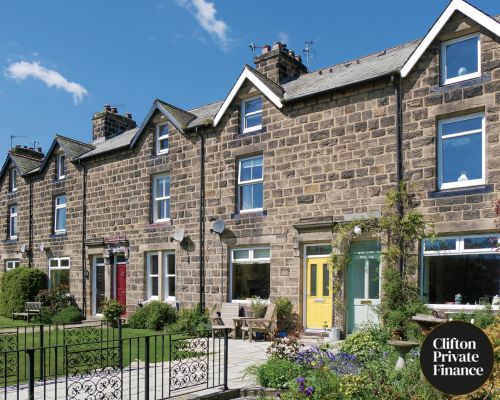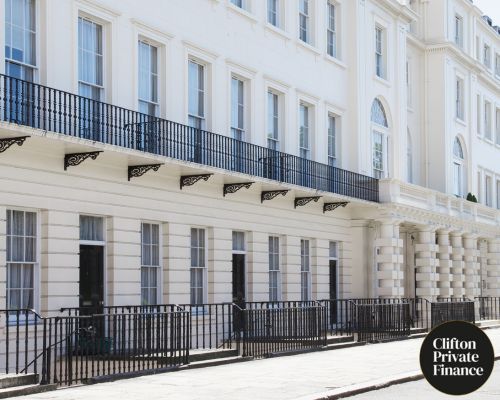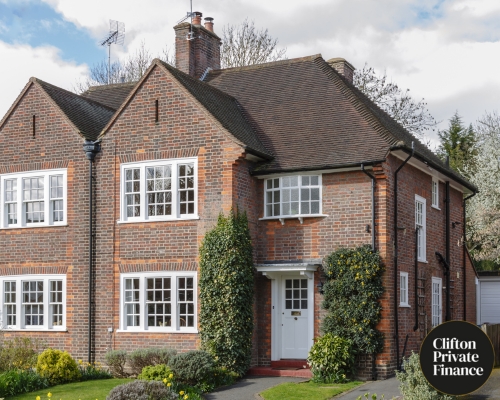Categories
How to use a bridging loan to extend a lease in central London

Many properties in central London are sold on a leasehold rather than freehold basis, meaning you must continue to make regular payments to the freeholder, on top of what you pay up front for the leasehold.
This can cause issues when it comes to trying to get a mortgage on a leasehold property.
The issue is that if there are less than 80 years remaining on the lease, the value of the leasehold will decrease significantly.
This can make it much harder to get a mortgage as lenders will consider the value of the property to be too low and there is a risk the freeholder might even choose not to renew the lease.
In such situations, a bridging loan can be a vital lifeline for both current leaseholders and people looking to purchase property on a short lease.

What is a bridging loan?
A bridging loan is a type of short term finance which can be secured on a property and allows you to borrow similar amounts to a mortgage. Unlike a mortgage, however, a bridging loan can often be arranged in as little as 5-7 working days and can be secured on property considered “unmortgageable”. This includes properties on a short lease.
Another advantage of bridging finance is that it can be secured on more than one property. That means if you are struggling to raise enough based on the value of a short lease property, you may be able to use another property you own as additional security to increase the amount you can borrow. Using another property as extra security may also allow you to get a better interest rate where this is an issue.
Bridging loans are usually offered over up to 18 months, although longer loan periods can sometimes be arranged. This makes them ideal for purposes such as arranging a lease extension, where the long term plan is to make the property mortgageable so you can remortgage or sell.
When you take out a bridging loan, you will have to specify an “exit strategy” which explains exactly how the loan will be repaid. This generally means refinancing with a new mortgage or selling the property and using the proceeds to repay the loan.

When to use a bridging loan on a short lease property
If your leasehold is nearing or has passed the 80 year threshold, a bridging loan can let you quickly raise the necessary funds to purchase a lease extension. Once the lease extension is secured, you can then either remortgage to pay off the bridging loan or sell the leasehold, if that is your intention.
Alternatively, if you are looking to buy a property on a short lease, a bridging loan can allow you to go ahead with the purchase, even if you cannot secure a mortgage on the property. With a bridging loan, you can raise the funds to buy the property and arrange a lease extension, rendering the property eligible for a standard mortgage.
If you wish to live in the property, you can then simply remortgage. Alternatively, you may be able to sell the leasehold property for a profit as the cost of extending a lease is normally less that the increase in value you will see once the lease extension is in place.
How much will a bridging loan to extend a lease in central London cost?
When you take out a bridging loan, there are three main costs to consider:
- Arrangement fees – When you first agree a bridging loan, you will have to pay an upfront arrangement fee, which will typically be set at 1-2% of the total capital being borrowed.
- Interest – This may be charged monthly, but you will often have the option to roll up the interest and pay it all in one go when you repay the capital. Interest rates for bridging loans vary from lender to lender and based on the amount you need to borrow and your personal circumstances.
- Exit fees – Not all lenders charge exit fees for bridging loans, so this can make a significant difference to how affordable your borrowing is. Where exit fees are charged, they are also usually set at 1-2% of the total capital borrowed.
All of these costs will vary depending on the lender, so it is important to shop around to get the best deal possible.
Make sure to consider all the issues, such as how long you will need the loan for before making a choice. A deal with a lower interest rate but higher fees could work out better if you need the loan for a long time, while the opposite will be true if you only need the loan for a very short period.
How to get a bridging loan for lease extension
Bridging finance for lease extensions is generally only offered by a handful of private lenders and dedicated subsidiaries of high street banks and building societies.
Using a whole of market finance broker provides the widest possible range of lenders to choose from. This helps to ensure you have the best possible choice of bridging finance at an affordable rate.
Need a bridging loan to extend a lease in central London?
Give us a call
0117 959 5094
or use our simple contact form to get in touch.
And if you've found this blog useful, please do pass it on...












